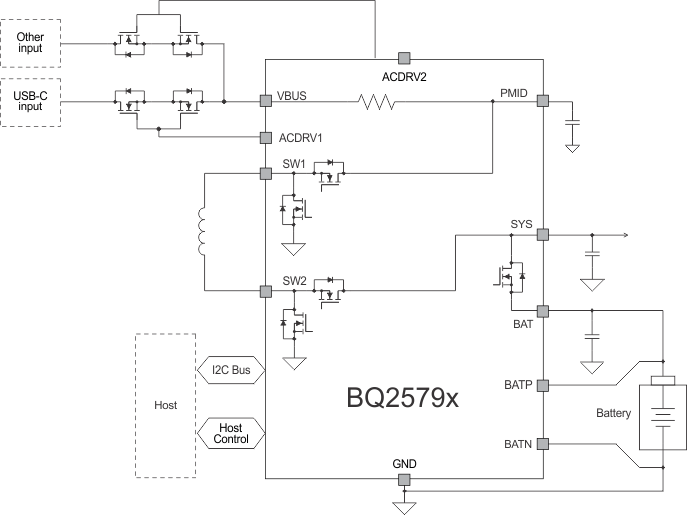SLYY195A August 2020 – May 2022 BQ25790 , BQ25792 , BQ25798
On-the-go charging
In order to support the USB On-the-Go (OTG) specification,one DC/DC converter discharges the battery to build up a regulated voltage at VBUS and power external devices when the adapter is not present. If the USB Type-C port requires fast role swap (FRS), the DC/DC converter has to be enabled and kept on standby all the time, even if an adapter is plugged into the USB Type-C port. When the adapter is disconnected, the back-to-back MOSFETs in the discharging power path turn on, passing the U3 output voltage to VBUS and holding on the VBUS voltage. Keeping the DC/DC converter always on actually causes extra quiescent current loss for the entire system.
 Figure 2 Example of a fully integrated
buck-boost charger.
Figure 2 Example of a fully integrated
buck-boost charger.